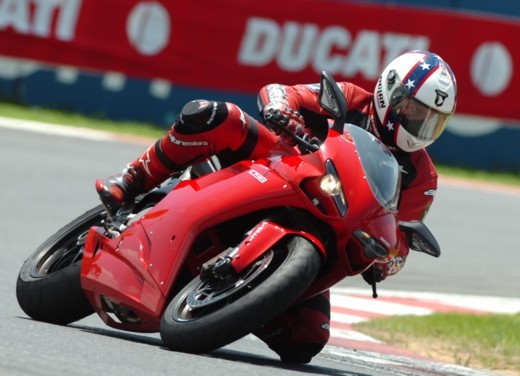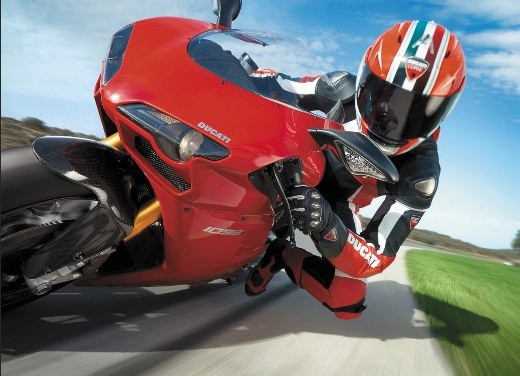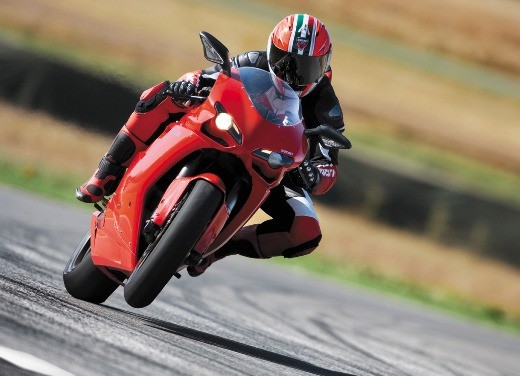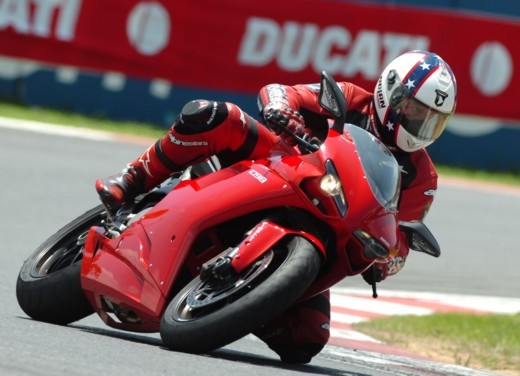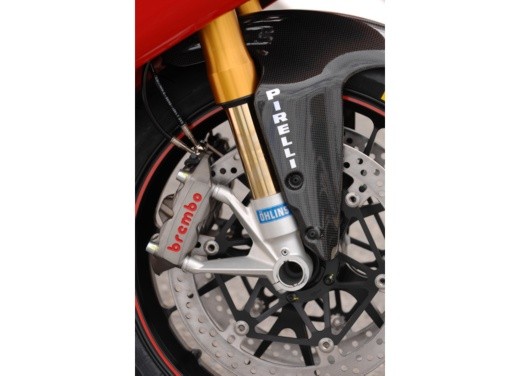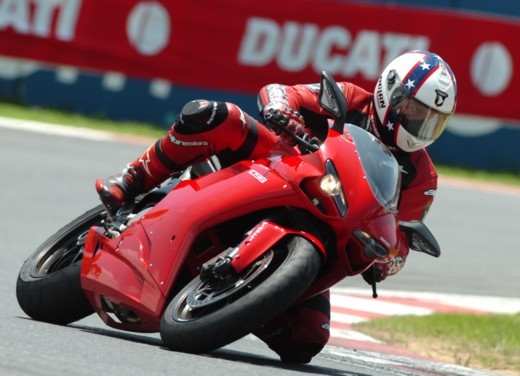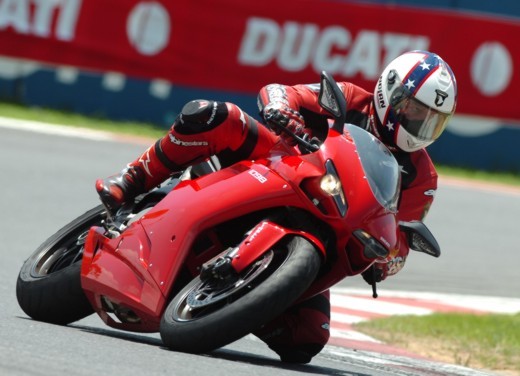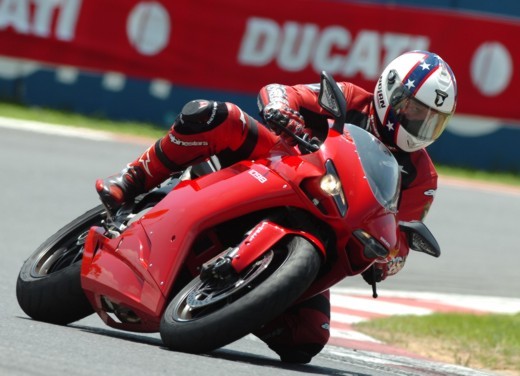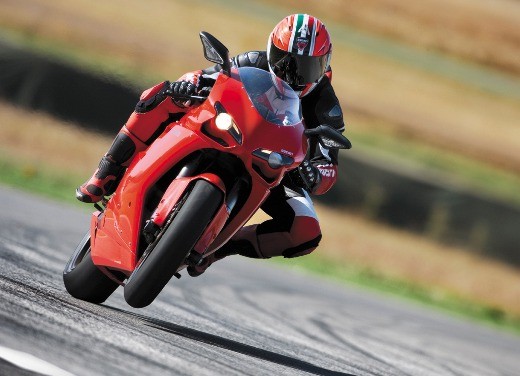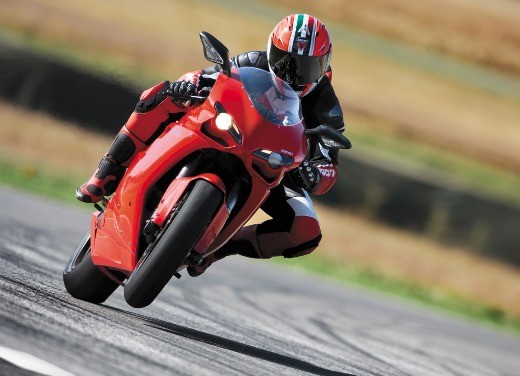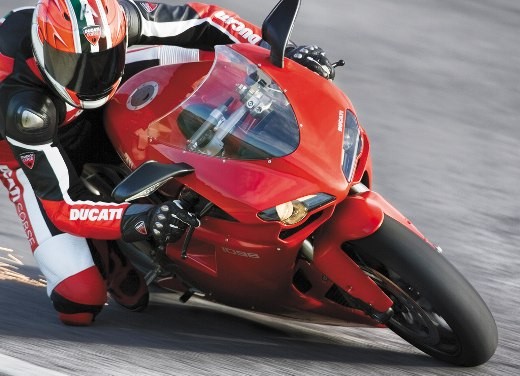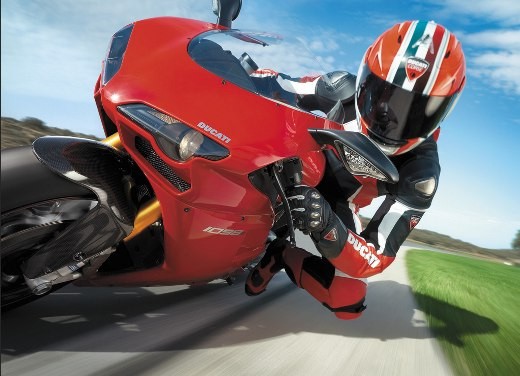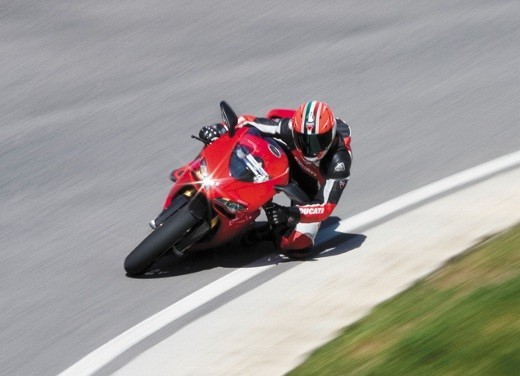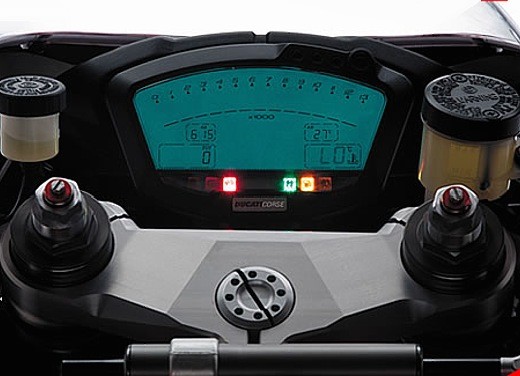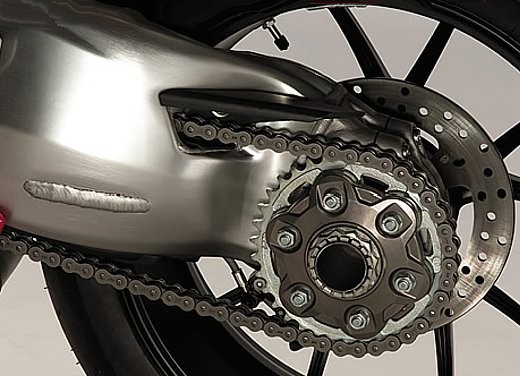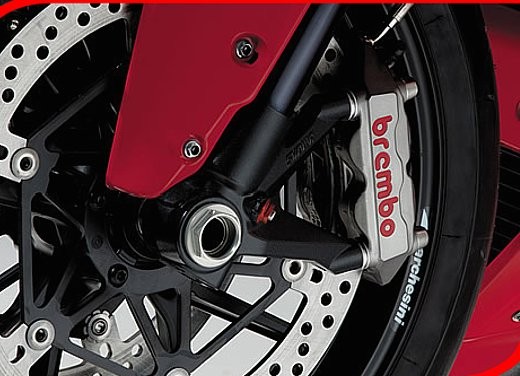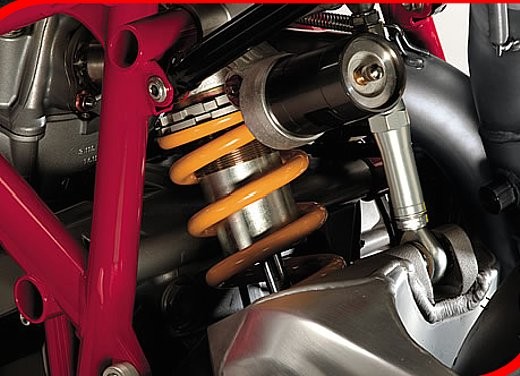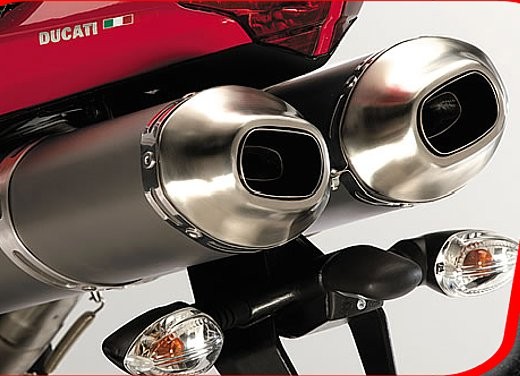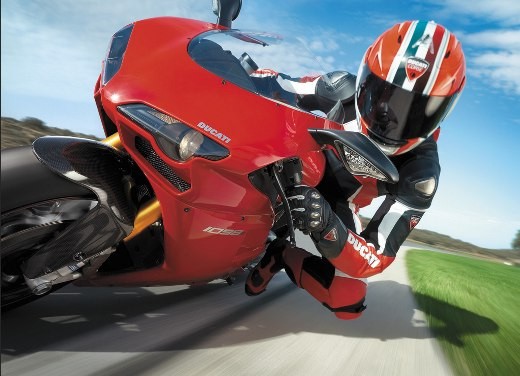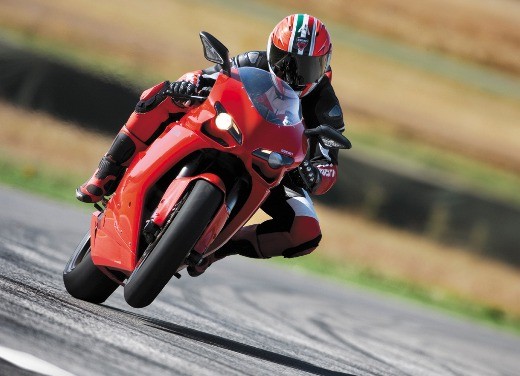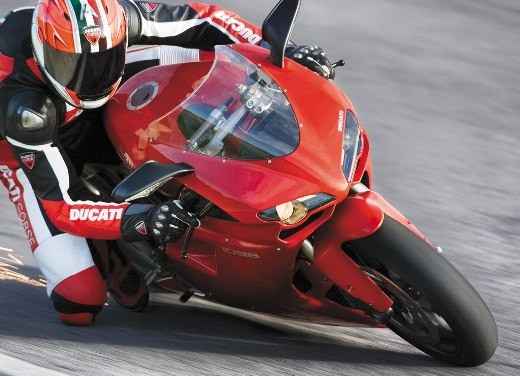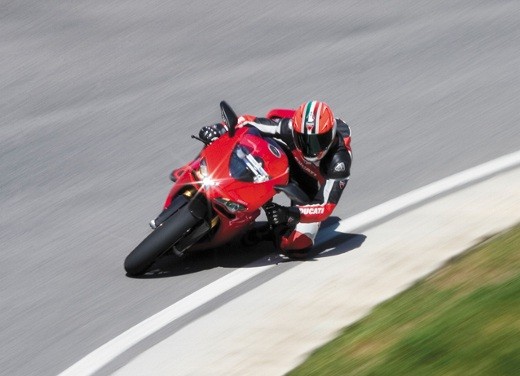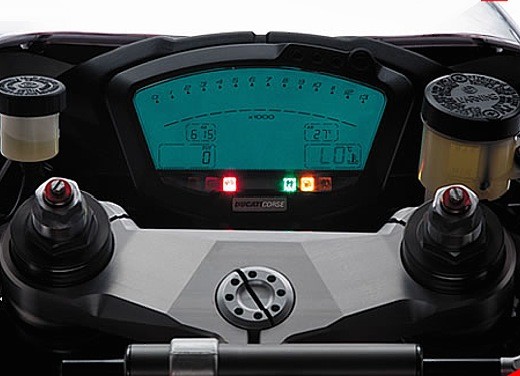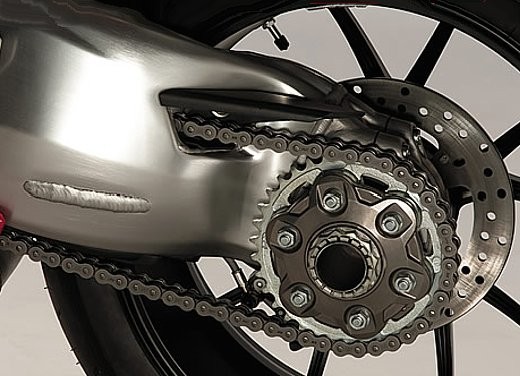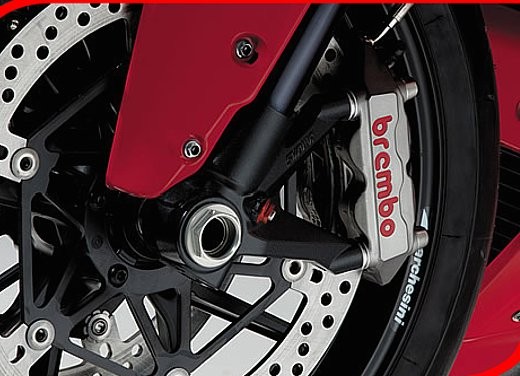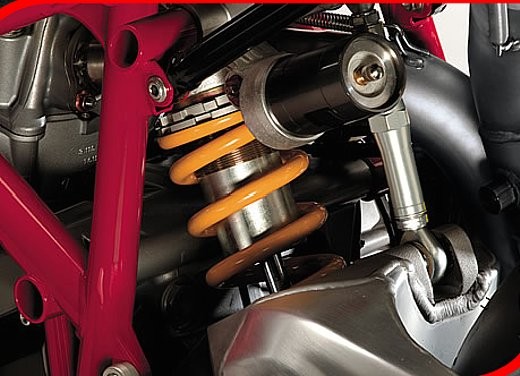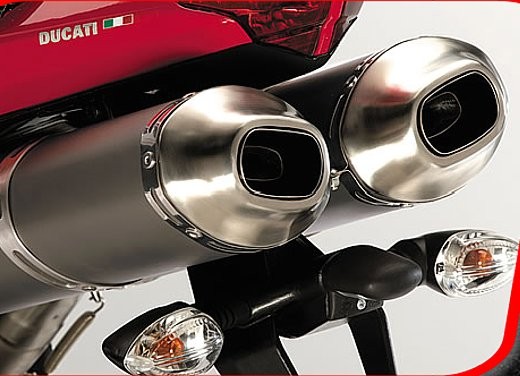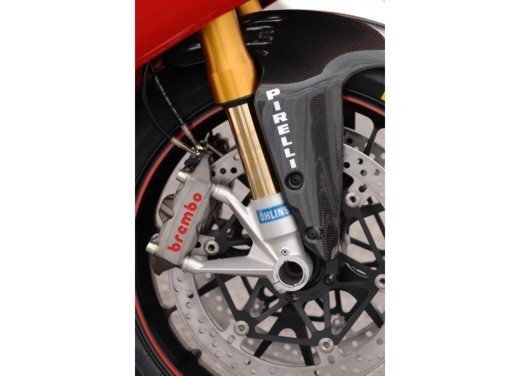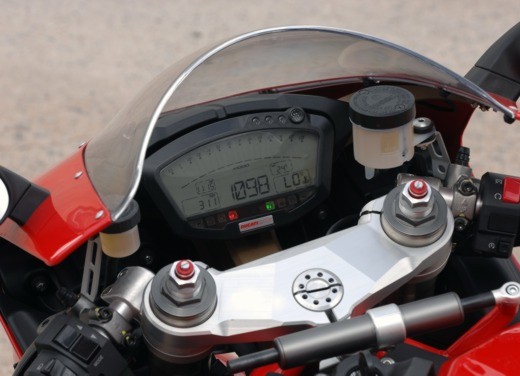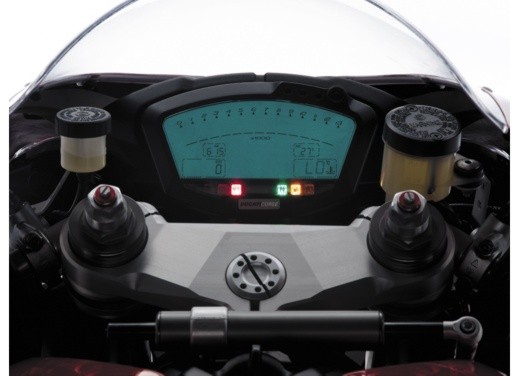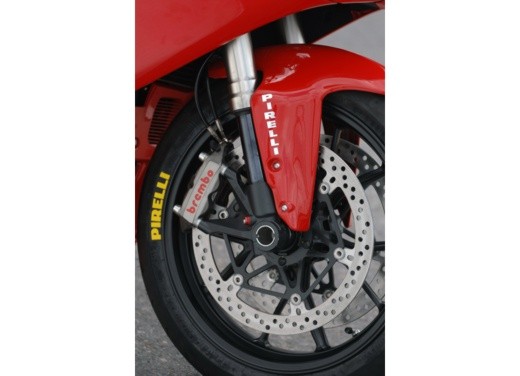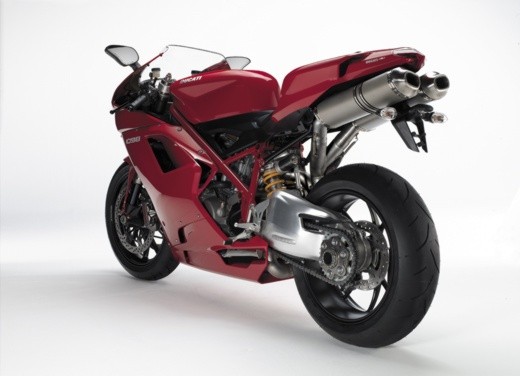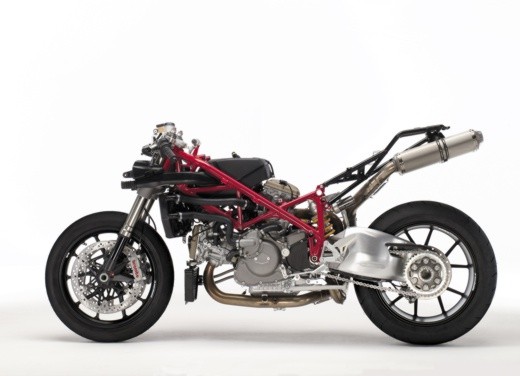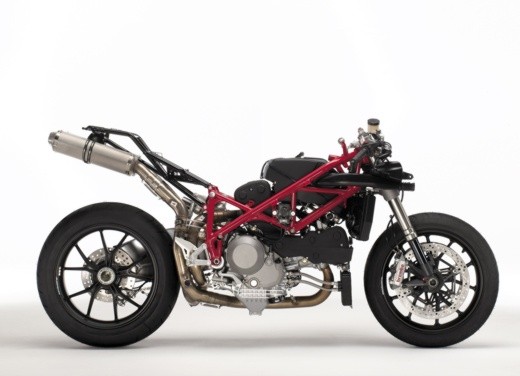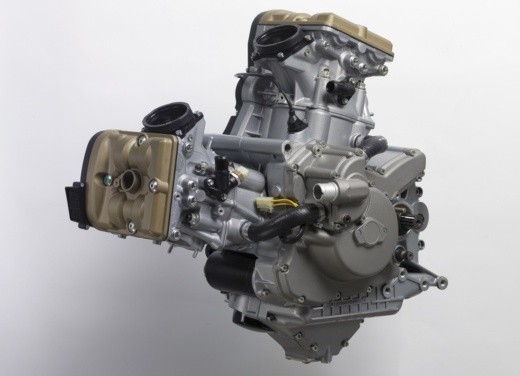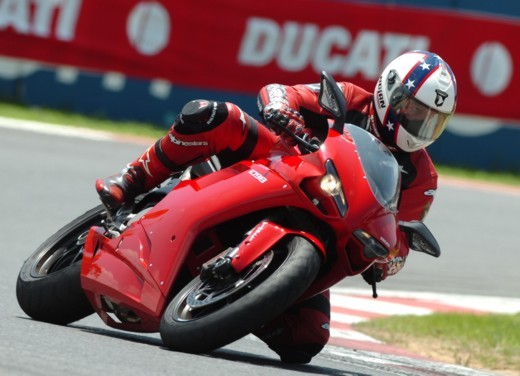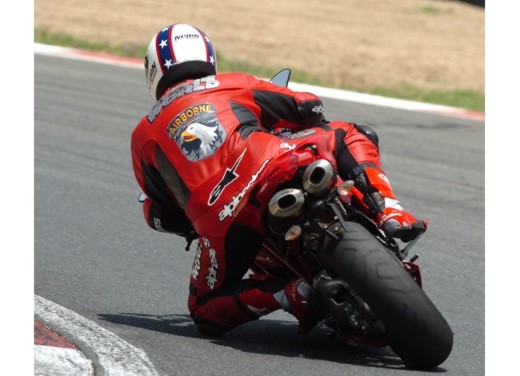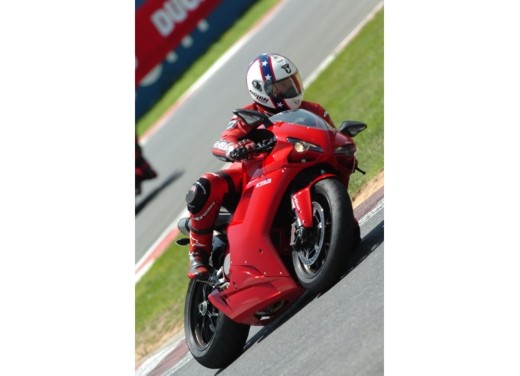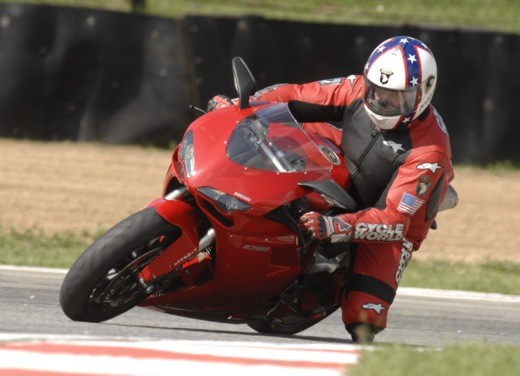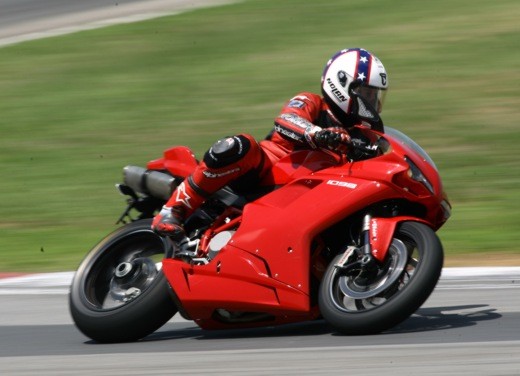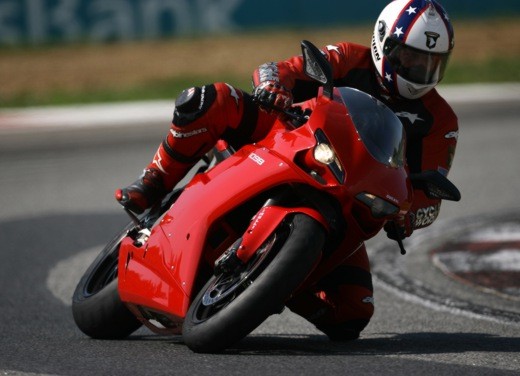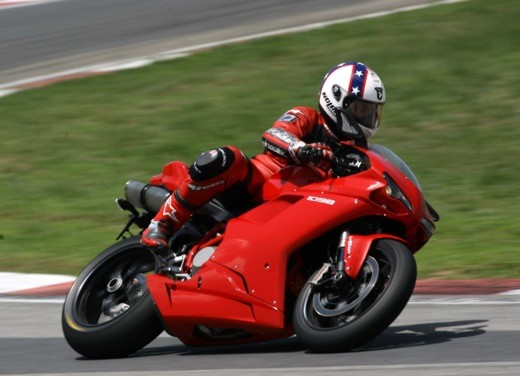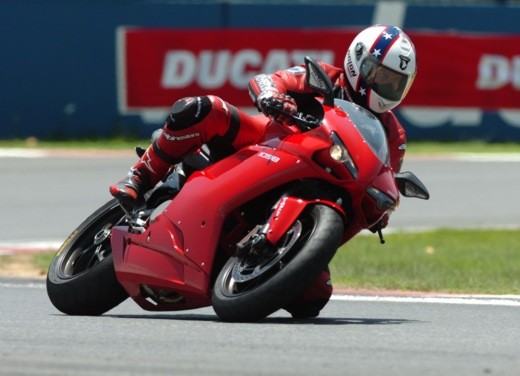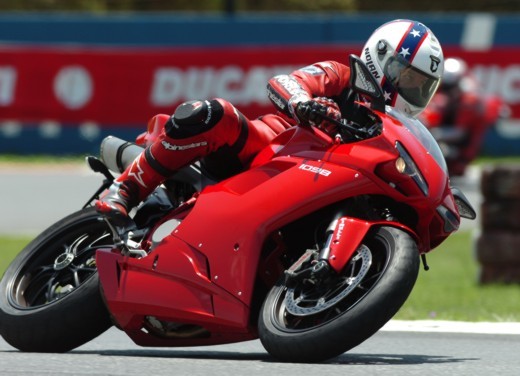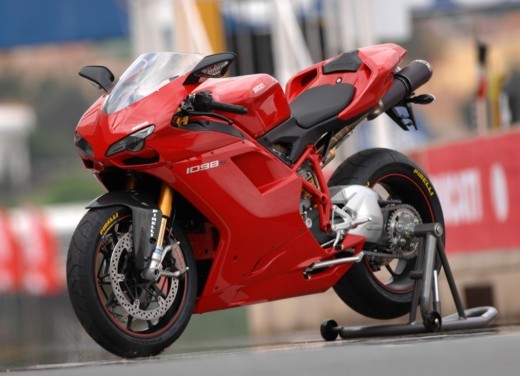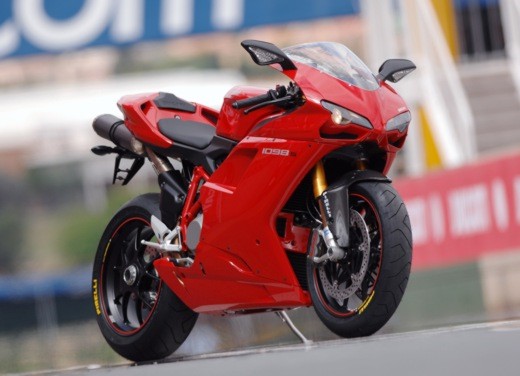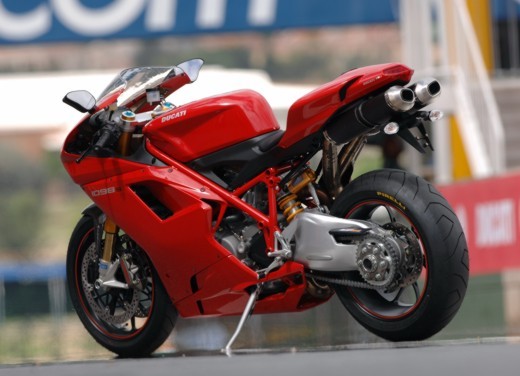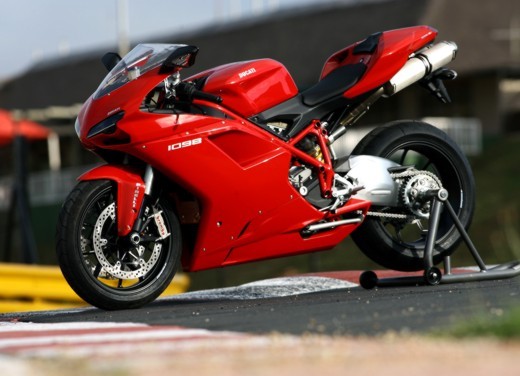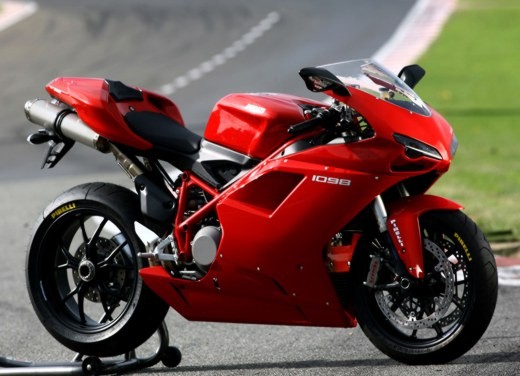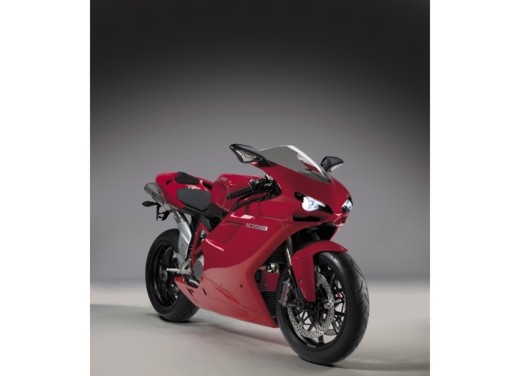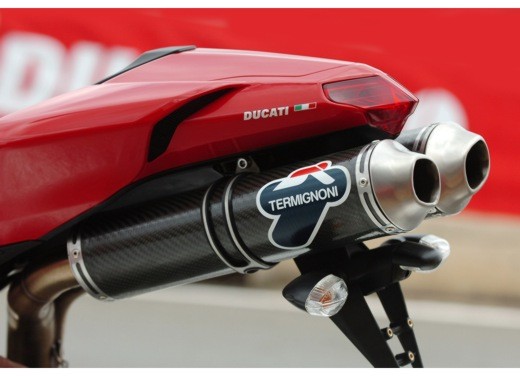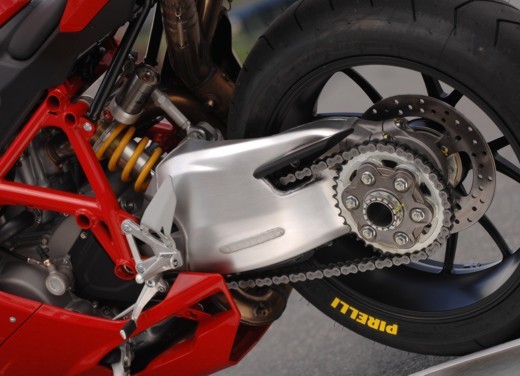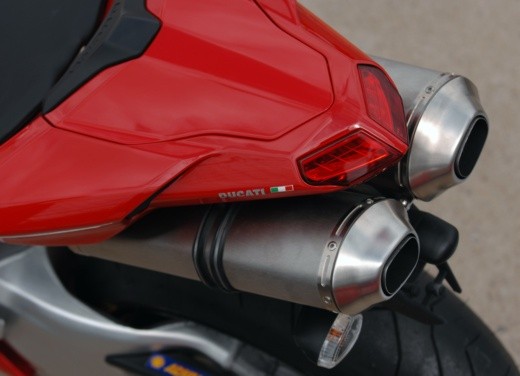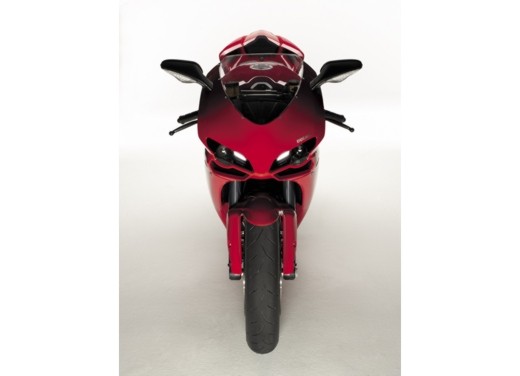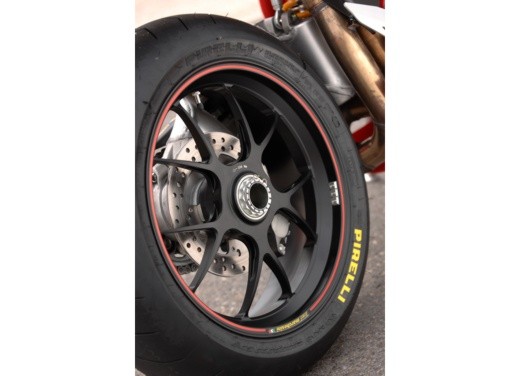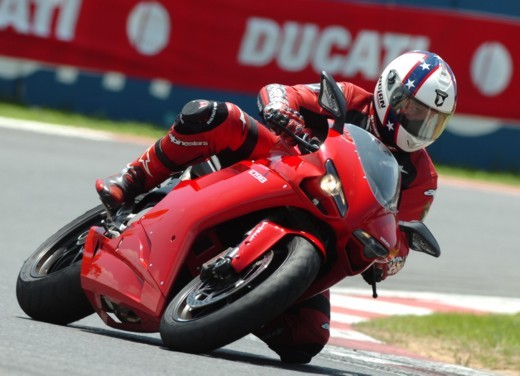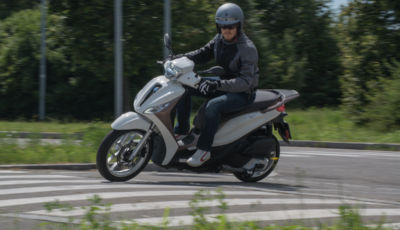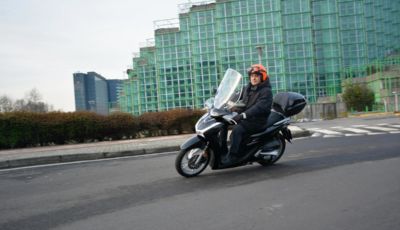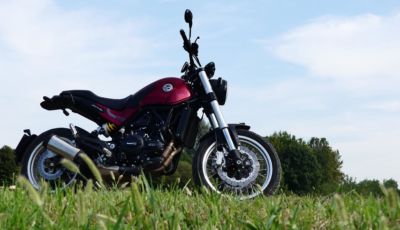Ducati 1098 – Test Ride

Ducati 1098 – Test Ride. Kyalami-South Africa. La Ducati ha cominciato a rimettere le cose a posto nel suo reparto stilistico e il suo nuovo modello di punta, la superbike 1098, è stata eletta “Regina del Salone di Milano 2006” dal pubblico degli appassionati. È il primo, determinante passo verso il successo, visto che la moto, in primo luogo, deve essere bella e grintosa, per cominciare ad emozionare dal primo, fondamentale contatto visivo. Poi deve essere potente e, conseguentemente, deve consentire di usare appieno della sua potenza: con slancio, con immenso piacere, con intensa emozione. E in sicurezza. Per la Ducati e il suo Direttore Generale, ingegner Claudio Domenicali, 1098 è una partita fondamentale: è il futuro. E nel suo progetto Domenicali e i suoi hanno immesso tutta la loro competenza e la loro passione creativa, perché la mitica 916, per anni la più amata ed ammirata icona del motociclismo sportivo, avesse una degna erede.
Con buona pace della 999, moto di assoluta eccellenza tecnica (non per nulla quest’anno è tornata a vincere il Mondiale Superbike), ma dall’estetica discutibile. Il consenso espresso dal pubblico al progetto stilistico di Ducati 1098 dice che Claudio Domenicali ha fatto bene a dare fiducia al nuovo, giovane designer di Ducati, Gianni Fabbro. Grazie alla sua creatività, il progetto 1098 ha messo a segno il suo primo colpo vincente. Il secondo è merito diretto di Domenicali e del team ingegneristico Ducati. Claudio (lo possiamo chiamare per nome perché è uno di noi, perché in moto ci va, e pure forte) ha voluto che la nuova Superbike Ducati riscrivesse gli standard della categoria. Innanzi tutto dando un nuovo senso alla scelta bicilindrica: una moto con propulsore a due cilindri deve offrire il vantaggio di essere più leggera di una con motore frazionato su quattro cilindri.
La ciclistica è straordinariamente precisa e responsiva, nitida negli inserimenti e agile nelle subitanee variazioni di traiettoria. Ducati 1098 si può guidare sia in modo molto aggressivo, sia tirando giri da pluricilindrica in tutte le marce, in modo più rispettoso della meccanica, chiamando in causa la sua coppia formidabile ai medi regimi: in ambedue i casi l’emozione è straordinaria, affascinante. Ma mai al limite del brivido, grazie ad una ciclistica che garantisce livelli di sicurezza assoluta.
1098, in ambedue le esecuzioni, ha dimostrato doti di stabilità impeccabili anche quando, presa confidenza con il tracciato, si è potuto affrontare il curvone in discesa dopo il traguardo a velocità prossime ai 250kmh. Una picchiata mozzafiato e cieca che si conclude in una seconda curva, meno veloce e con compressione massima perchè lì il tracciato torna ad impennarsi. Anche in queste condizioni estreme la stabilità e il controllo della traiettoria sono assoluti. L’avantreno non ha mai accenni di alleggerimento, tanto meno di perdita di compostezza e stabilità rettilinea.
Nelle curve medie e lente, 1098 ha confermato una grande neutralità di risposta dinamica consentendo, con l’assistenza dei formidabili Pirelli Dragon Evo Supercorsa Pro, pregevoli angoli di piega. Una citazione speciale va alla potenza e modulabilità del nuovo impianto frenante Brembo: bastano due dita per ottenere decelerazioni potenti e sicure, con perfetto feeling di quello che sta accadendo alla ruota anteriore. Marzocchi ha realizzato una forcella USD da Ø 43mm di pregio assoluto e molta parte dei meriti della ciclistica va anche alla sua assoluta funzionalità. Per chi vuole quel feeling in più assicurato da una sospensione veramente da corsa, la Öhlins USD Ø 43mm della 1098 S effettivamente ha grandi meriti che le riconosciamo da sempre. Ma a questo punto, in tutta onestà, più che una questione di qualità di guida è una questione di soldi: la 1098 Base costa €17.000, la 1098 S costa €21.000. Sarebbe interessante vedere che cosa succede a montare una Marzocchi USD Ø 50mm, tipo MV F4 1000 R per intenderci.
Il Test Il circuito di Kyalami, in South Africa, è stato uno dei tracciati storici dello sport motoristico nell’emisfero australe, fino a quando ragioni di sicurezza, ma soprattutto stantie ed ipocrite sanzioni politiche l’hanno relegato ad un utilizzo quasi esclusivamente locale. Kyalami è indubbiamente una pista difficile, tutta curve e controcurve, la maggior parte cieche, in contropendenza o con raggio decrescente. Le variazioni altimetriche sono violente, con impennate ripide e picchiate che terminano in curve veloci e con forti compressioni. Una pista da togliere il fiato. E in effetti, il fatto che si trovi su un altipiano a 1800 metri toglie il fiato, ma nel senso letterale dell’espressione, sia ai piloti che ai motori. Qui il poderoso bicilindrico 1098 perdeva circa il 15% della sua cavalleria, in pratica 140Hp anziché 160Hp. Ma le prestazioni sono rimaste ugualmente fulminanti. In primo luogo perché la Ducati 1098 è veramente una moto straordinariamente leggera per la cilindrata. Lo si avverte subito inforcandola. È compatta, ben bilanciata, ridicolmente facile da manovrare anche da ferma.
In sella, si apprezza l’assetto relativamente avanzato che consente di impugnare i semimanubri a braccia semi-flesse, mentre sulla 999 l’impostazione di guida era più allungata. Il 999, però, aveva il merito di porre la sella circa 25mm più in basso, che non è una differenza da poco, soprattutto per piloti di oltre 80kg. Il nuovo bicilindrico è magnifico perché riunisce tutte le virtù del propulsore motociclistico ideale: ha rotazione perfettamente pulita e solida progressione già da 2000 giri, ha una impressionante densità di risposta in potenza da 3500 giri, infine ha un allungo travolgente da 7000 giri fino a 10.500 giri (limitatore a 10.700). E in più non vibra. L’elasticità e la risposta in potenza sono tali che è stato possibile percorrere in quarta anche curve a raggio stretto e quindi affrontare, sempre in quarta, anche le ripide impennate susseguenti, con la moto che ha sempre progredito con grinta assolutamente inaspettata. Questa è stata la dimostrazione finale del potenziale del propulsore 1098, ma anche di tutto il progetto 1098, con il suo peso esemplarmente contenuto che fa riscoprire a fondo il senso della moto sportiva essenziale (ma certo non povera!), e in particolare della motorizzazione bicilindrica, senza che questa imponga rinunce in termini di prestazioni estreme, che anzi vedono la 1098 al top assoluto, con oltre 300kmh di velocità massima.
L’alleggerimento di ogni singolo componente è stato oggetto di un lavoro progettuale raffinatissimo, che ha interessato il propulsore, il sistema di scarico, il telaio e ogni minimo componente che consentisse di essere alleggerito senza perdere affidabilità. Rispetto al 999, il nuovo 1098 pesa 15kg in meno, per un totale di 173kg, il record assoluto della categoria, ulteriormente migliorato nella versione 1098 S, di altri 2kg più leggera, 171kg. La maggiorazione della cilindrata, da 999 a 1098cc, del bicilindrico Ducati “Desmoquattro-Testastretta” è stata accompagnata da un ulteriore affinamento della sezione termodinamica che ha consentito di ottenere una potenza di 160Hp a 9750 giri e 12,5kgm di coppia massima a 8000 giri, valori di eccellenza assoluta, che fanno del nuovo propulsore il miglior bicilindrico della storia Ducati, e semplicemente il miglior bicilindrico di sempre.
Motore La nuova edizione del bicilindrico Ducati “Desmoquattro” non rappresenta solo la maggiorazione a 1098cc del precedente 999cc, ma costituisce una delle più significative evoluzioni che il progetto ingegneristico, nato di 851cc nella seconda metà degli anni ’80, abbia subito nei suoi quasi 20 di vita, paragonabile solo a quella che portò alla definizione della termodinamica, detta “Testastretta”, introdotta con il 999. Ma cominciamo con i numeri della nuova geometria interna. La nuova cilindrata nasce associando l’alesaggio di 104mm del precedente 999R con una corsa di 64,7mm, +1,2mm rispetto al 999 standard. Il rapporto di compressione è a sua volta cresciuto da 11,5 a ben 12,5:1 grazie al profilo più compatto della camera di combustione. Il treno di distribuzione Desmo e la configurazione dei condotti di aspirazione sono stati totalmente ridisegnati sulla base della esperienza raccolta con lo sviluppo del potente V4 “Desmosedici” con cui Ducati corre in Moto GP. Le valvole sono poste ad un angolo incluso più stretto (24°20’ contro i 25° del 999) e hanno anche diametro maggiorato: Ø 42mm aspirazione contro Ø 40mm e Ø 34mm scarico contro Ø 33mm. Ma soprattutto di grande importanza, per l’incremento della efficienza volumetrica del propulsore, è la nuova configurazione, molto più rettilinea, dei condotti di aspirazione rispetto alle valvole relative.
Infine i corpi farfallati del sistema di iniezione hanno ora sezione ovale ed un’area di passaggio nettamente superiore a quella dei corpi da 54mm impiegati sul 999. I numeri di Potenza e coppia, rispettivamente 160Hp a 9750 giri e 12,5 kgm a 8000 giri, ci dicono che l’incremento prestazionale, rispetto al già molto notevole 999 2005-2006, non è direttamente proporzionale a quello di cilindrata, ma nettamente superiore in virtù della significativa impennata che l’estesa riprogettazione della sezione termodinamica ha comportato in termini di efficienza sia volumetrica che termodinamica. La razionalizzazione del complesso treno di distribuzione desmodromico ha portato ad alleggerire il propulsore di ben 5kg. Il nuovo impianto di scarico, in acciaio inossidabile, contribuisce con altri 1,7kg di peso in meno rispetto al precedente, nonostante includa un sistema di post trattamento catalitico dei gas di scarico che hanno consentito di omologare il nuovo 1098 secondo la stringente norma Euro 3.
Ciclistica I tecnici Ducati sono rimasti fedeli alla struttura a traliccio in tubo di acciaio per la costruzione del telaio del nuovo 1098, il cui disegno è del tutto simile a quello originale. A fare una differenza estremamente significativa sono le dimensioni degli elementi tubolari primari e il peso totale della struttura. Già ad un esame visivo anche superficiale, la nuova edizione del telaio Ducati appare più poderosamente strutturato in virtù del rilevante incremento di diametro dei tubi principali, che ora sono da Ø 34mm anziché Ø 28mm, mentre i tubi secondari, che legano fra loro i principali con una serie di triangolazioni, sono rimasti da Ø 25mm. L’utilizzo di nuove leghe di acciaio ad alta resistenza ha consentito di ridurre contemporaneamente lo spessore dei tubi da 2mm a 1,5mm. Il risultato finale è un telaio più leggero di 1,5kg, con valori di rigidità strutturale marcatamente superiori, in quanto quella torsionale è rimasta praticamente invariata, mentre quella flessionale è più che raddoppiata. Anche il resto della struttura del telaio è stato oggetto di una minuziosa ricerca mirata ad alleggerire ogni singolo elemento, senza, ovviamente, metterne a rischio l’affidabilità.
Così il sub-telaio reggisella, in tubo di acciaio, pesa 1,4kg meno di quello del 999 e il supporto anteriore della strumentazione e della carenatura, ora in fusione di magnesio, pesa 1,2kg in meno. Radicalmente rinnovato, sempre rispetto alla ciclistica del 999, è il retrotreno, con il ritorno al forcellone posteriore monobraccio in alluminio. Si tratta di un pezzo di grande raffinatezza progettuale ed esecutiva che ha comportato un incremento della rigidità strutturale del 40%, rispetto al forcellone convenzionale del 999, senza alcun aggravio di peso.
Dal punto di vista geometrico, la ciclistica 1098 non comporta nessuna rivoluzione, confermando i precedenti valori di angolo di caster, 24o30’, e di avancorsa, 97mm, dell’assetto dell’avantreno. Solo l’interasse è cresciuto da 1420 a 1430mm. Di altissimo livello tutta la componentistica relativa a sospensioni, impianto frenante e pneumatici. Ed è in questo settore che Ducati 1098 differenzia le due versioni in cui viene proposta. 1098 Base è equipaggiata con sospensioni anteriori Marzocchi USD 43 dell’ultima generazione. Si tratta di unità di elevatissima qualità, con cursori trattati con riporto di TinAl per migliorarne la scorrevolezza. Di Marzocchi è anche il monoammortizzatore a gas con serbatoio “piggy-back”. 1098 S invece impiega sospensioni Öhlins sia all’avantreno, anche in questo caso delle forcelle USD 43, che al retrotreno, con un ammortizzatore di tipo analogo al Marzocchi. Altro componente che differenzia le due versioni sono le ruote. Si tratta sempre di ruote in lega di alluminio della Brembo, ma quelle di 1098 Base sono realizzate in fusione, mentre 1098 S è dotata della versione forgiata delle stesse, più leggere di 2kg per un peso globale di soli 171kg, il record della categoria.
Brembo, ovviamente, fornisce l’impianto frenante e in questo caso, trattandosi di sicurezza, non ci sono differenze fra le due versioni. I dischi anteriori sono da ben 330mm, con spessore di 5mm, e le pinze sono le 4 pistoni “Monoblock” con attacco radiale, un pezzo di eccellenza assoluta della Casa italiana, derivate direttamente dalla esperienza delle corse. Si tratta del più potente e modulabile impianto frenante oggi montato di una moto di serie. Pirelli, infine, ha sviluppato una nuova misura posteriore dei suoi iper-performanti Drangon Evo Supercorsa Pro, la 190-55/17 montata su canale da 6”, il cui profilo consente di disporre di grip e trazione straordinari, anche ad angoli di piega “fuori ordinanza” per una moto stradale. Il nuovo profilo, inoltre, si abbina perfettamente a quello del 120-70/17 anteriore consentendone un più efficace utilizzo, fino allo spigolo della spalla.
Ducati has closed a not too brilliant page of its styling creativeness the day that EOM Claudio Domenicali entrusted young Ducati’s designer Gianni Fabbro with the project of the new top model, the 1098, the Superbike due to replace the technically very capable, but stylistically controversial 999, designed by Pierre Terblanche. The 999 had the toughest task: replacing the 916/998, one of the most elegant and fascinating sport bikes ever, a revered icon even today. Gianni Fabbro has been able to recreate the magic of the 916 in a new, modern and aerodynamically very correct shape. Thanks to its highly emotional style, the 1098 has won its first laurel: has been named the most beautiful, most desirable motorcycle at the latest Milan Show. For Ducati this might mean more than winning the Superbike title again next year, even if Ducati will have to race the 999, not the 1098, since FIM is still pondering the opportunity of modifying the rulebook to allow the twin cylinder machines an extra displacement of 200cc over the multis, to the limit of 1200cc against 1000cc. But on the market, even on the very selective market of extreme superbikes like the Ducati 999, and now the 1098, looks count at least as much as all out performances. And there the 1098 won its first victory. The numbers and an accurate visual inspection confirm that inside this very attractive body, Claudio Domenicali wrapped the best Ducati ever built. The evolution of the legendary Ducati Desmoquattro Testastretta 90o Vee Twin goes well beyond the larger displacement extracted from a structure that is unchanged in size and, of all, lighter in weight. Claudio Domenicali has proved to be not only a very sharp manager and an extremely competent project engineer, but, above all, a real motorcyclist, “one of us”, one who knows that one kilo less in the overall weight of the bike is worth at least as much as one extra Hp added to the power curve. Compared to the 999, the 1098 weighs 15 kilos less and adds more that 20Hp for an almost 1Hp per 1kg power to weight ratio: 160Hp per 173kg. These numbers not only confirm that it will boldly meet the best competition on the market today: they also make the superbike powered by a twin cylinder engine a much more credible alternative to the multis in terms or real performances and not of sounds and feelings alone. The real facts behind a superb engineering effort by Claudio Domenicali and his men is in that the new 1098 was dramatically vital for the future of Ducati that could not afford another controversial model met by a tepid response from the public. Every engineering feature and every component is top quality to the last detail and this time the first response from the public was indeed most enthusiastic. And our first test, on the not so friendly Kyalami track, confirmed that the new Ducati 1098 sets the new standards in the field for quality, performance and riding pleasure. TECHINAL ANALYSIS ENGINE Braking the 1000cc barrier, when that was already regarded as the final developmental limit of a basic design that dates back to the Pantha 500 of 1976, is only one of the great achievements of the Ducati 1098 project, but possibly not the most outstanding. In fact, the new displacement mainly comes from having enlarged the bore from the 100mm of the 999 and 999S units to the 104mm of the 999R powerhouse, thus a well established entity that did not pose any problem. The stroke needed to be increased only 1.2mm, from 63.5 to 64.7mm, to achieve the new 1.1 liter displacement. The stroke increase was so marginal that there was no need to modify the rod length, confirmed at 124mm, center–to-center. A lot more evolutionary has been the work applied to the thermodynamic section and to the desmodromic distribution train. This last has been completely re-designed to make it more compact, lighter and more stable. The results of a super engineering work have been multiple. First, the heads are lighter, to the point that the new “Testastretta Evoluzione” engine is 3 kilos lighter than the previous 999. The finger-type followers cooperating with the “opening” cams are shorter and, consequently, have their pivot shafts placed closer to the valves stems. This has allowed a drastic re-setting of the inlet runners to a narrower angle to the valve stems: from the 999 42o to 33o5’. Also the valves have been set to a new, slightly narrower angle: from 25o (12o inlet and 13o exhaust) to 24o20’ (11o30’ inlet and 12o50’ exhaust). The combustion chamber is more compact, for a compression ratio bumped to 12.5:1 from the previous 11.5:1. But what counts most is that the new inlet runners have a straighter path to the valves mushrooms. Thus they produce a marked increase in terms of both their volumetric efficiency and of their capability to induce a stronger tumble effect in the inhaled charge that greatly enhances the thermodynamic efficiency of the new combustion chamber. Valves are also bigger (inlet 43mm vs 41.5mm exhaust 34mm vs 33mm) and open to increased lifts (inlet only 11.8mm vs 11.7mm but exhaust 10.6mm vs 10.1mm). Distribution timing has not been disclosed, but should feature less overlap compared to previous 999/999S cam grinding. Finally, the 1098 engine is fed thru oval shaped throttle bodies directly derived from the racing experience with both the Moto GP Desmosedici and the latest 2006 Superbike champion 999R. The new oval throttle bodies are a lot more volumetrically efficient than the 54mm cylindrical ones of the 999. Their elliptical size (67.75mm larger diameter by 49.5mm smaller diameter) roughly correspond to an equivalent cylindrical size of more than 60mm. The whole engine looks more compact and cleaner than its predecessors and now the throttle bodies are set parallel, not converging at about 10o like in the 999, this confirming the new geometry of the inlet runners. A new stainless steel exhaust system includes a latest generation catalytic converter that granted the 1098 the Eu 3 (or EPA ULEV) homologation, while saving another 1.7 kilos. ROLLING GEAR The 1098 shares with its 999 predecessor the same steering geometry and basically the same overall measures. The steering axis is set at the same caster angle of 24o30’, the Marzocchi 43mm male slider forks use the same 36mm offset triclamps and this front end set-up produces the same 97mm trail in combination with the customary 120/70-17 front tire. Only the wheelbase spans 1430mm, 10mm more than the previous one, but only because the rear swingarm (same 491mm center to center measurement) has been set to a more stretched out, horizontal trim. The commonality between the previous 999 chassis and the new 1098, ends to these numbers. The frame is also similar in the basic layout of its tubular steel trellis design, but the main tubing goes from the previous 28mm gauge 2mm to a more massive looking 34mm gauge 1.5mm to create a structure which is 1.5 kilos lighter while producing the same torsional rigidity, but increasing the flexional one by more than 100%. And just looking perfectly in line with the Ducati tradition: still very lean, but much, much more muscular. The same goes for the new, light alloy single side type, swingarms. This also has a dimensional commonality with the previous, twin arm unit, in terms of center-to-center measurement, but in addition to just looking a great piece of superb engineering, is also 50% torsionally stiffer, while not adding one gram in weight. All this makes for a highly refined structural platform which has been completed by adopting components of the highest quality to give life to one of the most advanced chassis in production today. The Ducati 1098 is equipped with state of the art suspensions, wheels, brakes and tires from top Italian specialists: Marzocchi, Brembo and Pirelli. Marzocchi supplies both the front forks, in the form of its latest 43mm TiNAl plated male slider units, and the rear, multi adjustable, nitrogen charged mono-shockabsorber. Brembo is present on the 1098 with its elegant cast aluminum wheels, in 3.50-17 and 6.00-17 front and rear sizes, and with its latest, race derived four piston “Monoblock” radial mount calipers, teamed to new 330mm twin rotors to generate the most technically advanced, powerful and efficient front disc brake. And Pirelli have developed their ultra-high-performance Dragon Evo Supercorsa Pro in a new rear size, 190/55-17, that offers more grip and traction to limit lean angles, thus getting the best out of the re-profiled 120/70-17 front rubber also. The Ducati 1098 is also available in a more refined, more expensive “S” variation featuring Öhlins racing suspensions, forged Brembo wheels and carbon fiber body components. 43mm Tin plated male slider Öhlins forks have been selected (in place of the fabulous latest edition of the Marzocchi 50mm male slider units) to make second thought upgrading less expensive thanks to the commonality of tri-clamps size. The more refined “S” edition costs 4,000 euros more (from 17,000 to 21,000 euros in Italy) while saving an additional 2.0 kilos, down to a record 171 kilos. TEST Ducati selected the South African Kyalami race track for the introductory test of their 1098. Kyalami was not the ideal choice for two reasons: it is a totally unknown, very hostile, hard to learn track full of blind, off-camber corners, and it is located at an altitude exceeding 5500 feet, a condition that deprives the mighty Ducati 1098cc “Testastretta-evo” twin by no less than 20Hps. A friendlier, sea level track would have allowed us to focus on what we were riding, getting the best out of the bike and of its full potential, rather than on where we riding, trying not to crash on that lost in the middle of nowhere track. Never mind. By the third (of five) test sessions, the track had grown more familiar to a level adequate to push the 1098 to some pretty impressive limits while keeping appropriate safety margins. Once aboard the 1098, the new Ducati superbike confirms the visual impressions we had the evening of its unveiling at the Milan Motorcycle Show a couple of months ago and indeed feels very light an compact. Very light above all, like a 350cc of yore. Only the seat height marginally disrupts the wonderful feeling of perfect togetherness with the bike, being set at 820mm, 25mm higher that on the 999. Yet the riding posture is very rational in the all important geometrical relationship at which clip-ons, seat and footpegs are positioned. In particular, highly positive is the reach to the clip-ons, with semi-flexed arms while on the 999 was more old fashioned, with arms well stretched out. Despite of having its breathing ability partly choked by the altitude, the new 1098cc Testastretta-Evo has produced enormously impressive performances. This latest evolution of the Ducati twin has got all one wants from a very high performance motorcycle engine: it is very tractable and responds very cleanly and shudder free from as low as 2000 RPM, surges at 4000 RPM generating gobs of massive torque that pull the bike out of any hole in any gear, then at about 7000 RPM starts its rocket like climb to the 10,500 RPM, with no hesitation and almost totally no vibration. Combined to the outstandingly light weight of the whole bike, the new 1098cc generated breath taking performances even if robbed of some 20Hp up there. The engine produces a throttle response of such density from 4000 RPM up and in any gear that the bike accelerates out of corners like a cheetah on steroids: very agile and very muscular. The engine produces a superb combination of impressive amounts of torque and flexibility down low and of fearless revvability up to extreme revs that make the Ducati 1098 stunningly aggressive always. The new chassis offers the rider the proper tools to keep this explosive combination under perfect control and turn it into an enormous gratifying, pure motorcycling experience. All in all, the Ducati 1098 is pure motorcycling to its best essence, starting from that very low overall weight that gives a new meaning to choosing a twin powered bike over a four. For the first time in years, this is no longer determined by personal preferences of volatile factors like sound or feelings. Here it is a matter of objectively higher potential over the whole spectrum of real life, track and road performances. Top speed exceeds the magic limit of 300 kph and it does not take much to get there: 0-200 kph only takes a stark 7” flat. The accelerations the Ducati 1098 generates are just blinding, as are the pick-up and the progression to peak power generated by the mighty midrange throttle response. At Kyalami there is a tight left hander heading into the main straight that was naturally negotiated at about 90 kph, in third speed, with the engine pulling from no more than 4000 RPM, but with such mighty push that at the end of the short straight and down into the breath taking downhill bend we could easily read 250 kph. Wow. Talking of fast bends, the Ducati 1098 chassis is just incredibly stable and surefooted down that very fast downhill bend and then into the following only marginally slower turn and relative sharp compression, due to the track going back uphill. Not one hitch. The 1098 keeps the plotted line with immaculate precision, fast, sharp, and totally safe. What makes the 1098 a very unique riding experience is that it associates this great stability and supremely precise steering response with great agility and nimbleness. The 1098 is easy and precise to point, immediate in responding to the rider’s inputs. Ducati 1098 can be leaned into corner to very extreme angles and will stay neutral and stay true to the line. Ducati 1098 Base edition set new standards in term of acceleration, throttle response, stability, agility, and matches the very best in top speed. And the new Brembo brakes are just incredible in term of power and tractability, so powerful and easy to modulate that two fingers are all it takes to bring the bike down to a full stop within the shortest distance a road legal bike is capable of. Just impressive. The Ducati 1098 S edition only adds the supreme finesse and efficiency of the Öhlins racing suspensions, and at the track it made some perceivable difference that might make worth paying the extra 4000 euros.

